NIL
Pac-12 media deal timing and quality comps to the ACC, Big 12
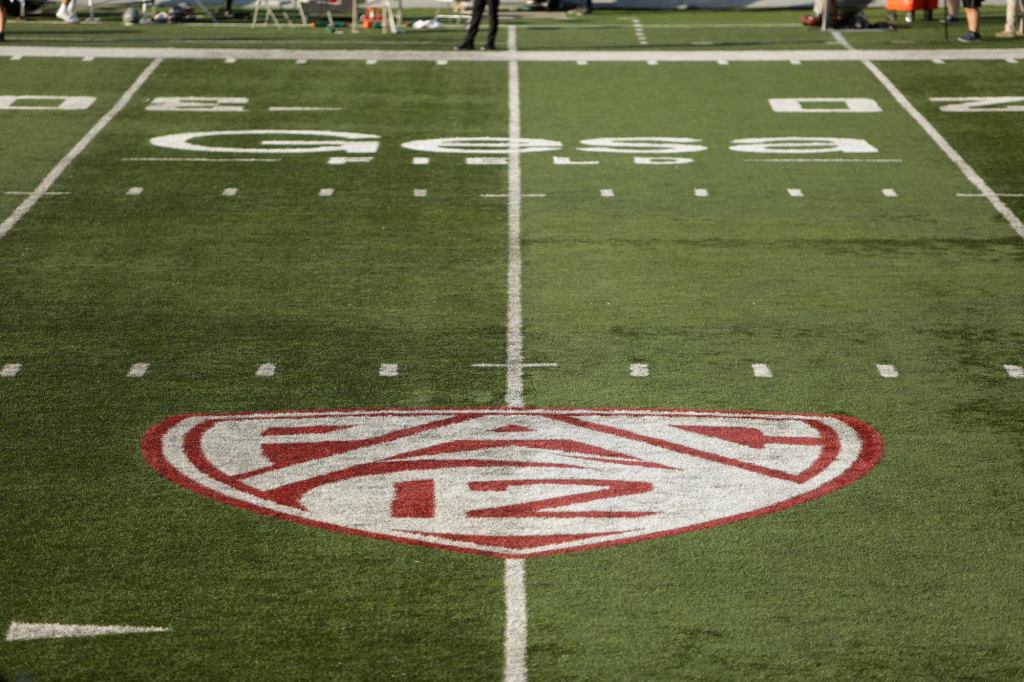
The Hotline mailbag publishes weekly. Send questions to wilnerhotline@bayareanewsgroup.com and include ‘mailbag’ in the subject line. Or hit me on the social media platform X: @WilnerHotline
Some questions have been edited for clarity and brevity.
In 2026, will the new Pac-12 be as competitive, or greater than, the likes of the ACC and Big-12? — @eric_zetz
The Hotline has given this matter much thought recently while publishing a series of columns on the College Football Playoff controversy.
The conference hierarchy in 2026 and beyond is interconnected to any analysis of CFP access models, whether it’s the automatic qualifier format (4-4-2-2-1) favored by the Big Ten or the at-large format (5+11) preferred by the Big 12, ACC, SEC and Pac-12, as commissioner Teresa Gould said this week.
(In our view, the Big 12 and ACC have no choice but to push for 5+11, because the alternative is the end of those conferences as we know them.)
The Hotline does not believe — not for a second — that the rebuilt Pac-12 will be as competitively successful as the ACC and Big 12 in the next era. Although to be fair, those conferences are not entirely comparable, either.
If quality depth is the standard, the Big 12 is superior to the ACC. No conference in major college football can match the Big 12 for parity, which is both a blessing and curse.
But if judging by the number of championship-caliber programs, the ACC possesses a clear edge over the Big 12. It has two programs capable of winning the national title, Clemson and Florida State. Until proven otherwise, the Big 12 has none. (The last current Big 12 school to win it all was Colorado in 1990.)
Using either standard, the ACC and Big 12 are a level above the rebuilt Pac-12.
But here’s a question worth pondering: Is the rebuilt Pac-12 closer in quality to the ACC and Big 12 than the ACC and Big 12 are to the SEC and Big Ten? Which gap is larger?
That discussion also depends on the framing — on how you define the strength of a conference. We believe the flaws in the Big 12 (lack of elite programs) and the ACC (lack of quality depth) are significant enough, relative to the SEC and Big Ten, to make the topic worthy of tracking in the upcoming season.
For the rebuilt Pac-12 to be closer in quality to the ACC and Big 12 than they are to the SEC and Big Ten in a given season, two benchmarks are required:
— Boise State must be Boise State.
Conferences are often judged by the success of their top brands. If Ohio State and Michigan are both mediocre, the Big Ten will be viewed as having a subpar season. (Same with Georgia and Alabama in the SEC.)
Boise State is the rebuilt Pac-12’s premier football brand by a clear margin. The Broncos must have a Top 15/20-caliber season in order for the Pac-12’s reputation to rise.
— At least two of the following four teams also must be ranked: Washington State, Oregon State, Fresno State and San Diego State.
If the legacy Pac-12 programs flounder with the arrival of the Mountain West contingent, the national narrative won’t be, “The newcomers must be really good to outperform the Beavers and Cougars.” Instead, the narrative will be, “See, the rebuilt Pac-12 is no better than the old Mountain West.” One of them must win nine or 10 games on a consistent basis.
The Aztecs and Bulldogs will have a greater role in shaping the Pac-12’s reputation than the likes of Utah State and Colorado State because of their locations and their recent history of success — of regularly beating the legacy Pac-12 schools, cracking the Top 25 rankings and producing 10-win seasons.
Put another way: There’s a path for the rebuilt Pac-12 to be seen as closer in quality to the ACC and Big 12 than those conferences are to the SEC and Big Ten, but it hinges on the performance in non-conference games (obviously!) and which teams are leading the way.
If Boise State finishes as an 11-win Pac-12 champion, with Washington State and SDSU, for instance, both sitting on nine victories, the conference will look much stronger than it would if, for instance, Colorado State or Utah State finished on top.
That’s the nature of narratives. Brand success matters at every level of the sport.
From your standpoint, what would be the incentive for a school like UNLV to arrange (in mediation) a move to the Pac-12? Is it financial stability? Conference strength? — @BobhornOrAgcat
UNLV is contractually locked into the Mountain West, so the question is moot … unless, perhaps, the conference cannot meet its financial obligations.
The poaching penalty and exit fee lawsuits have, in total, roughly $150 million at stake. If only half that amount enters the Mountain West’s bank account, the distributions promised to the Rebels and others could be impacted.
Would that be enough to spur UNLV to leave? Would it change their legal commitment?
We don’t have clarity on those matters. (Few do.) And because neither the Pac-12 or Mountain West has signed a media rights agreement, there’s a leap-of-faith element for the Rebels with either course of action.
The Hotline’s view hasn’t changed: UNLV’s administration made an epically bad decision to remain in the Mountain West through the 2020s.
Our assumption is the Pac-12 would welcome the Rebels if they had a change of heart, but only for the right price. They are not a must-have school. There are no must-have schools remaining for the Pac-12. It secured the three it had to have (Boise State, San Diego State and Gonzaga) last fall.
Will Texas State receive a full share after this Pac-12/Mountain West mediation mess? I feel the Pac-12 has lost leverage on that front, unless North Texas or UTSA become a serious alternative. — @vince_per
We can’t answer that question without knowing, at the very least, the outcome of the mediation. How much of the $55 million owed to the Mountain West in poaching fees will the Pac-12 retain or relinquish?
And would the schools agree to use whatever pot of cash exists to lure Texas State, which would offer vital access to football-crazed Texas.
In our view, leverage remains with the Pac-12: The Bobcats would be foolish to pass on the chance to join a conference with Boise State football and Gonzaga basketball, especially when the annual media rights payments likely will triple or quadruple what they receive in the Sun Belt.
But it’s not entirely clear to the Hotline that anyone in the Pac-12 will receive a full share, at least in the traditional sense. The conference is considering a revenue distribution model that rewards and incentivizes success, much like the ACC has implemented.
Exactly how it will be structured, we cannot say.
The conference could use postseason revenue (NCAA Tournament and CFP) to fund an unequal distribution of cash. Or it could include a portion of the media rights revenue in the pot, as well.
What do you think about NIL and its impact on college football and basketball. And just a tad on the rest of the sports, too? I believe it will be the end of college sports as we’ve known it for so long. — Bo L
The impact of NIL, especially when combined with the transfer portal, has been momentous across many sports. Texas Tech’s success in softball, fueled by the arrival of million-dollar-pitcher NiJaree Canady from Stanford, is all the proof you need.
To the extent that amateurism mattered to your enjoyment of the competition, maybe this era marks “the end of college sports as we’ve known it.”
But the Hotline doesn’t know many college football and basketball fans who are no longer watching or attending because players are getting paid.
As the late, great Chris Dufresne, of the LA Times, used to say: “Everyone has an alma mater.”
And that’s true whether your quarterback is getting $2 million in NIL or nothing in NIL.
Media deal timeline for the Pac-12? @TonyOnly_
One month after the lawsuits are resolved.
I hope that’s specific enough for you, because it’s as specific as the Hotline can possibly be.
Think about the situation from the standpoint of ESPN, The CW or Fox executives:
Why commit tens of millions of dollars over time to a conference that has two major lawsuits unresolved — lawsuits that could impact the membership structure, competitive success and overall outlook.
What if the Pac-12 and Mountain West end up with a court trial?
What if the Mountain West takes the Pac-12 to the cleaners?
We view those outcomes as extremely unlikely. But why would network executives take the chance? It would be tantamount to financial malpractice.
They want legal clarity and financial certainty.
The court-ordered stay of the poaching penalty lawsuit expires July 15, so we expect resolution to the mediation by that point. From there, the media rights piece should wrap up fairly quickly.
If the Pac-12 had played an eight-game conference schedule from 2014-23, would it have avoided the endless cannibalism and gotten a team in the playoffs consistently enough to still be around today in its original form? — Will D
Admittedly, the Hotline has not plowed through 10 seasons of data to offer a definitive answer. But our hunch is that yes, swapping a conference game for a non-conference cupcake might have resulted in the extra win for a given team in a given season and propelled the Pac-12 champion into the CFP more often than was actually the case.
Pac-12 teams participated in the four-team event in 2014 (Oregon), 2016 (Washington) and 2023 (Washington) and just missed on several other occasions.
If Stanford had played Sacramento State instead of Oregon in 2015 … if Oregon had played Idaho instead of Arizona State in 2019 … the Pac-12 might have been better represented in the CFP.
(Also, idiotic scheduling strategies, like asking teams to play Friday night road games after Saturday road games, contributed to a multi-year competitive malaise.)
Would more CFP teams have saved the conference? We aren’t so sure.
USC and UCLA likely would have left for the Big Ten anyway. And it’s unrealistic to think ESPN’s media rights offer would have been substantially higher in the fall of 2022 based on one or two additional playoff bids in the pre-COVID era.
The Hotline loves alternative history and hypothetical scenarios. But in this case, it’s difficult to connect a one-game change in the conference schedule to a Pac-12 survival scenario.
The seeds of destruction were largely rooted in off-the-field issues.
Is high school recruiting much less important because of the transfer portal? Players can develop at smaller schools who weren’t four- or five-star recruits but have grit and heart and the ability to improve. — @chipe
It’s absolutely less important, at least at the highest levels of the college football food chain.
The Power Four programs can swap out 25-to-33 percent of their rosters each year using the transfer portal, with Colorado as the extreme example under coach Deion Sanders. That said, strong high school recruiting, player retention and roster cohesion remain the prime ingredients for success.
At the lower end of the chain, in the Group of Five and the FCS, high school recruiting remains critical.
Those programs typically lose their top talents to the heavyweight schools through the transfer portal and NIL offers. Without quality replacements on the roster and ready to step in, consistent success is elusive and regression is, in many cases, inevitable.
Will the Pac-12 do anything to regain autonomous status back? Or has that ship already sailed? — @CelestialMosh
For those unfamiliar, “autonomous” is a legislative term established a decade ago. The so-called Autonomy Four conferences (ACC, Big Ten, Big 12 and SEC) have some freedom to set their own rules within the broad NCAA structure. The Pac-12 might seek to regain A-4 status, but the odds are long.
Far more common in the college sports lexicon is the term “Power Four,” which used to be the Power Five and is specific to the College Football Playoff governance and revenue distribution models.
There is no chance of the Pac-12 regaining power conference status, in part because the term Power Four is no longer material. The Big Ten and SEC control the format for 2026 and beyond. The ACC and Big 12 can provide input but have no material authority.
Effectively, the CFP structure now has three tiers: the Power Two, the Other Two and the Group of Five.
I haven’t seen it made public how much The CW is paying for Pac-12 football. Are you able to share that amount? — @cougsguy06
Clarity on this front should emerge next spring, when the Pac-12 releases its tax returns for the 2024-25 fiscal year. The statement of revenue will include whatever cash entered the conference’s coffers from the media rights deal with The CW and Fox during the 2024 season.
Our hunch is the amount paid by The CW was roughly $1 million per game, and that’s likely the case for the 2025 media deal announced in April, as well.
But revenue for WSU and OSU during these transition seasons was a secondary consideration to exposure on linear (broadcast and cable) networks. And the deals with The CW, Fox, ESPN and CBS are providing plenty of exposure.
*** Send suggestions, comments and tips (confidentiality guaranteed) to wilnerhotline@bayareanewsgroup.com or call 408-920-5716
*** Follow me on the social media platform X: @WilnerHotline
NIL
College Football Is Beyond Cooked With This Latest NIL Trend

Who saw this one coming? Oh that’s right, EVERYONE!
The slow death of college football as it has been constructed for the past century will be studied someday.
The veil of amateurism has been completely lifted with the advent of NIL and the transfer portal where players can just shill themselves out to the highest bidder.
READ: NIL Lawyer Outlines Lasting Effects Of Sherrone Moore Debacle.
The latest trend might be the worst of them all, though, as we are practically treating college athletes like NFL veterans at this point.
I’m referring, of course, to programs and reporters alike announcing players “re-signing” at their current school.
Allow me to insert my obligatory “what happened to the game I love” before I go any further.
Players are out here acting like free agents in the NFL. What are we even doing here?
Let’s just go ahead and rip that Band-Aid off and stop treating these players like amateur student-athletes, because this is just the latest “point of no return” for the old days of college football.
If you were to take a time machine back, even ten years ago, and tell a fan that players would be getting social media graphics made to announce they’ve signed a contract to remain at their current school, they’d probably throw themselves out the window.
The sentiment is virtually identical, as even modern fans see the ridiculousness in all of this.
It’s a sad state of affairs for anyone who considers themselves a college football traditionalist, as I’m sure even the staunchest defenders of NIL at its inception didn’t have something like this in mind.
Remember when this was just supposed to be so players could make money off the field without having the commies at the NCAA come down on them with an iron fist?
Now, some of these players are making more money than players on their rookie contracts in the NFL.
I’m all for the players getting a slice of the pie, but if this is what we are moving towards, why do we even have academic standards as it is?
As a wise man once said, “We ain’t come here to play school.”
That was ten years ago, and Cardale Jones sounds like a prophet now.
We are hurtling towards a junior league for the NFL, though I fear we have already gone too far to reverse course now.
NIL
CBS Sports ranks Top-25 transfer players in College Football Playoff

One aspect of the offseason that affects teams and contenders every single year now is the NCAA Transfer Portal. Now, ahead of the College Football Playoff, we can see how some of those additions panned out for programs that made the field based on a recent ranking done by those at CBS Sports.
In an article from Friday, CBS Sports rated the Top-25 transfers across the dozen teams who will be in the CFP. Of them all, Oregon led the way with four names on this list, which tracks as they finished fourth last offseason in On3’s 2025 Team Transfer Portal Rankings. Five other teams then had three apiece, with all of them finishing in the Top-20, including two in the top-five and the one who was ranked as the best portal class in the nation, per that same rating from On3.
And, of the fifteen of them who transferred this last offseason, eleven of them were in the Top-100, including six who were in the Top-10, of On3’s Industry Ranking of 2025’s Top Transfer Portal Players. Ten were then in the Top-10 of their respective position, four of those being the top overall player at their position, in that rating from On3.
Needless to say, players like these are what make this next part of the year so important, with the one-time portal window set to open on January 2nd. Before we get to that part of the calendar, though, let’s take a look at these past transfers who could end up helping a team win a national title this season, as rated by CBS Sports:
Even in two days of hindsight, this ranking at number one looks even more spot on. That’s as, as of last night, Mendoza, the quarterback of the top-seeded team in the country in the Hoosiers, won the Heisman Trophy, as the first winner of the award in program history up in Bloomington.
A transfer from California, who was the No. 12 overall player and the No. 4 QB in the portal per On3, in his first season with IU, Mendoza has been one of the best quarterbacks in the country with a career season at 71.5% completion for 2,980 yards, a national best of 33 touchdowns, and six interceptions, while also rushing for 240 yards and six more scores. Now, after leading them to an undefeated record and a Big Ten Championship, and after hosting the Heisman last night in NYC, Mendoza will lead Indiana, the No. 1 overall seed, into the field in hopes of making more history in the CFP.
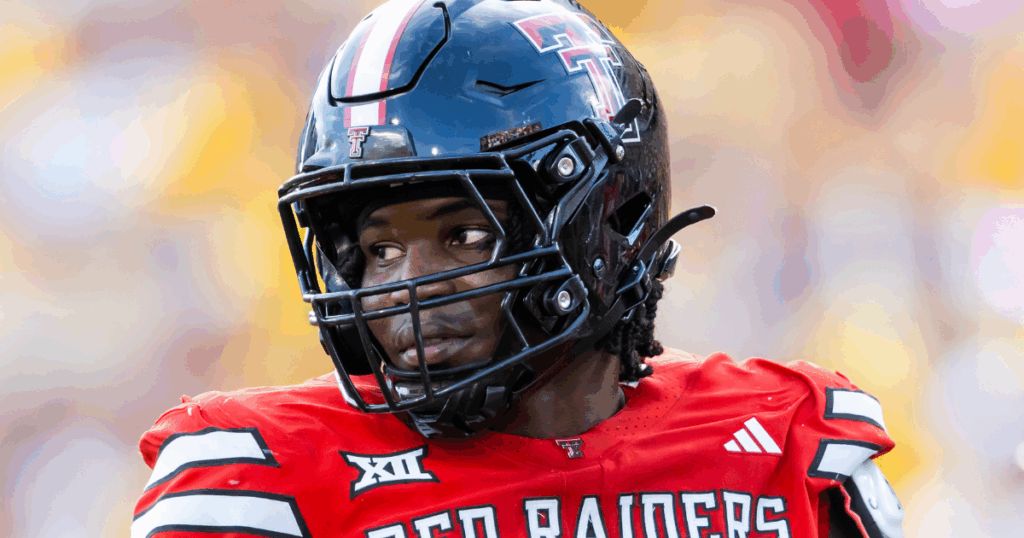
Texas Tech, which had the No. 1 overall class in the portal per On3, had three names on this list just from their defense. Bailey leads that, after being a top-ten overall transfer and the second-best defensive end in the portal at On3, with what he did this season in Lubbock.
Transferring in from Stanford, Bailey had a career-best season with 43 total tackles, with 17.5 being for loss with 13.5 sacks, three forced fumbles with one recovery, and a deflection for the Red Raiders. Production like that is a big part of Texas Tech, with them posting a top-five overall defense, having the best season in school history at 12-1, winning the Big 12 Championship, and making their debut in the CFP.
Downs has been impactful at Ohio State since his transfer two offseasons ago from Alabama. He now may be part of a national title winner, with the Buckeyes having a chance to go back-to-back in the College Football Playoff.
As an anchor on the backend of their defense, being one of the best players in all of college football, Downs, who received Heisman votes as a safety as well as won the Thorpe Award, has had 60 more tackles, 5.0 being for loss with one sack, with two interceptions and two deflections. That has been part of what has led the top overall defense in the country this season, as Ohio State enters as just a one-loss team to be the No. 2 overall seed in the CFP.
Sayin did the exact same thing as Downs, as he transferred two offseasons ago from Alabama, after signing there before the retirement of Nick Saban, to Ohio State. This was his first season as the starter, though, and it has been quite the year he had in Columbus.
Sayin posted a national best in completion rate, and one of the highest all-time, at 78.4% en route to 3,323 yards, 31 touchdowns, and six interceptions for the Buckeyes, which also had him as a finalist last night for the Heisman Trophy. Now, on one of the best teams in the country, Sayin will attempt to lead Ohio State to a second consecutive national title in the College Football Playoff.
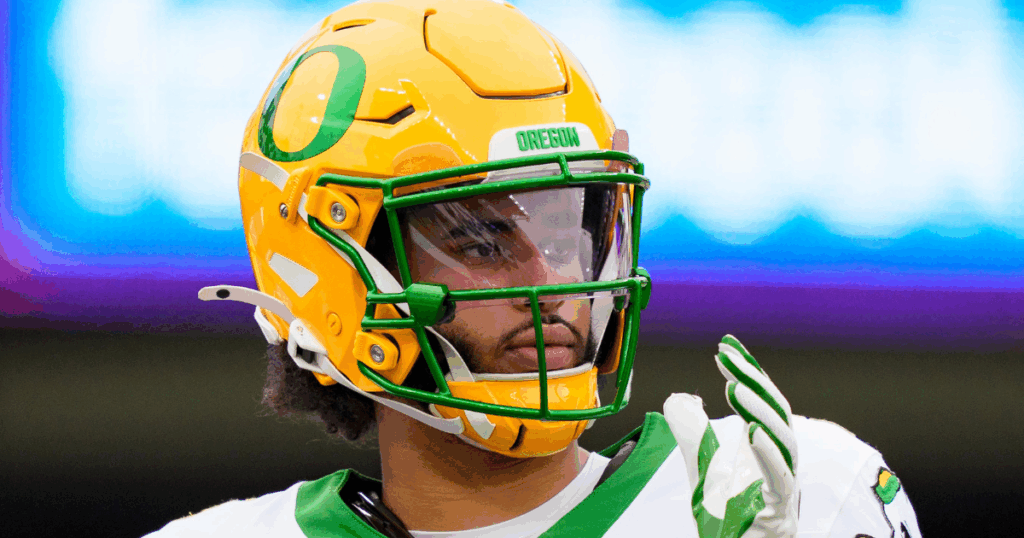
After starting as a freshman at UCLA, Moore transferred two offseasons ago and sat as the backup last year at Oregon. Now, a year later as the starter, that decision has paid off with what he did in Eugene, as he rounds out the top-five here for CBS.
Moore posted 72.5% completion for 2,733 yards, 24 touchdowns, and six interceptions for a top-fifteen offense this season for the Ducks. He’ll now lead Oregon, in a very favorable position as the first of the non-bye teams at No. 5 overall, into what could be run of retribution for them after what happened last year in the CFP.
Texas A&M was one of the best defenses in the nation this year when it came to pressures and tackles for loss. Howell was then the biggest part of that effort in what was his second season in College Station after originally transferring from Bowling Green.
Howell posted the best campaign of his career this year with the Aggies with 29 tackles, 14.0 of those being for loss with 11.5 sacks, along with six deflections and one forced fumble. He’ll now look to continue wreaking the same havoc in the playoff, with A&M set to open up with a home game at Kyle Field.
After the first two weeks of the season, one name that wasn’t expected to be on a list like this would be Chambliss. However, with the play as well as an injury to QB Austin Simmons, Chambliss took full advantage of the opportunity that came his way this year in Oxford after transferring to be a backup from out of Ferris State (DII)
Chambliss, a Top-40 QB in the portal last offseason per On3, went on to post a total of 290.5 total yards per game and 24 touchdowns overall, with 3,016 yards and 18 touchdowns coming as a passer at 65.5% completion, for the Rebels. He’ll now look to keep their offense humming, despite the coaching changes the past two weeks, in what’ll be their debut appearance in the playoff in the ‘Sip.
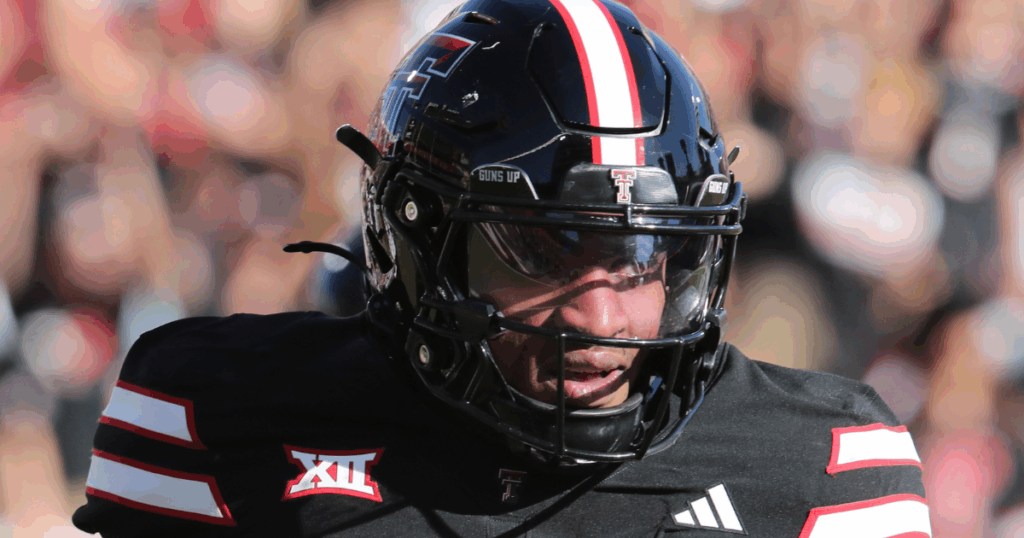
Going back to the defense for the Red Raiders, Height is another defensive end that’s had a great first season in Lubbock. That’s after transferring in last offseason, after being a top-fifty player in the portal and in the top-ten among edges at On3, from Georgia Tech, after beginning his career with two seasons apiece at USC and Auburn.
On that same unit, Height posted some career-best numbers of 33 total tackles, 10.5 being for loss with 9.0 sacks, to go with two forced fumbles, with a recovery, as well as a deflection. That has two pass rushers in the top-ten here at CBS for Texas Tech, who hopes to see both keep causing those kinds of problems for their eventual opponents in the CFP.
Oregon was seen to have one of the better offensive lines in the country this season. A major piece of that was Pregnon, who was a top-thirty overall transfer and the second-best interior lineman after two seasons apiece at USC as well as Wyoming.
Pregnon did not allow a sack this season as part of that line. And, behind him, the Ducks had a top-fifteen total offense at 38.2 points and 246.8 yards per game, with them hoping to have the same output in this appearance in the CFP.
Concepcion was already one of the better wide receivers in college football after his first stop with two years spent at NC State. He then, after being a top-ten overall transfer and the second-best receiver in the portal per On3, was even better this fall for Texas A&M.
Concepcion was the leading pass catcher for the Aggies this season with 57 receptions for 886 yards, averaging 73.8 per game and 15.5 a catch, and nine touchdowns. He, along with their second-leading receiver not too much further down this ranking, will now try to be just as explosive in the pass game as A&M prepares to debut in the College Football Playoff.
11. Miami DE Akheem Mesidor
12. Ole Miss RB Kewan Lacy
13. Texas Tech DT Lee Hunter
14. Oregon DB Dillon Thieneman
15. Oregon OT Isaiah World
16. Indiana LB Aiden Fisher
17. Miami DB Jakobe Thomas
18. Texas A&M WR Mario Craver
19. Georgia WR Zachariah Branch
20. Miami QB Carson Beck
21. Alabama WR Germie Bernard
22. Ohio State CB Davison Igbinosun
23. Oklahoma WR Isaiah Sategna
24. Indiana CB D’Angelo Ponds
25. Tulane QB Jake Retzlaff
NIL
$87 million college football coach comments on rumor he’s leaving for Big Ten team

Following a 2025 season full of coaching changes, one of the biggest gigs in the game still remains open. The Michigan Wolverine football program fired head coach Sherrone Moore after two seasons at the helm after he took over for Jim Harbaugh, leaving the team in need of a need coach for the second time in three years.
What’s tricky for Michigan is the timeline. Since Moore’s firing was credited to non-football reasons and came at an abrupt moment, the Wolverines are hopping on the carousel after everyone else already has a seat. Lane Kiffin made his big move, the SEC had half-a-dozen teams total make a coaching swap, and even Penn State, a conference rival for Michigan, finally found a solid fit in Iowa State’s Matt Campbell.
But that doesn’t mean the Wolverines’ leadership won’t aim high. They reportedly had the head coach of Alabama, Kalen DeBoer, as one of their options at the outset of the search. Even prediction markets like Kalshi reflected a sentiment that DeBoer would be in the mix in Ann Arbor. At least, that’s if he wanted to be.

As of Sunday evening, Alabama fans can rest easy knowing their second-year head coach is all the way painted in Crimson from head to toe and ready for a big postseason run. After speculation had bubbled to the social media streets, DeBoer shut it down with the following statement:
“My family and I are very happy in Tuscaloosa and remain extremely grateful for the support of President (Peter) Mohler, Greg Byrne, the Board, and so many others,” DeBoer said, according to Yea Alabama, the school’s official fan experience page. “We have an incredible opportunity in front of us, so my sole focus is on Alabama football and our preparations to play Oklahoma in the College Football Playoff.”
Kalen DeBoer, Alabama working on extension to $87 million contract
If a statement wasn’t enough to convince fans of his loyalty and Alabama’s as well, the two sides are reportedly entered in contract extension talks, according to On3’s college football insiders, Chris Low and
“Kalen DeBoer and Alabama are in ongoing talks about an extension, but nothing has been agreed upon or signed,” On3 posted on X Sunday evening. DeBoer is already signed for quite a while Ahead of his first season, 2024, DeBoer arrived from the West Coast and inked a deal worth $87 million over eight seasons. He’d still have six more years left on that contract after wrapping up this College Football Playoff run.
However, as has been the case for many coaches mentioned in rumors for other jobs, the schools may just want to re-sign another deal to signal to fans that no, their man is not going anywhere for now.
More on College Football HQ
NIL
Dick Vitale, Charles Barkley call out College Football Playoff committee over Notre Dame snub

Six days after Notre Dame missed the College Football Playoff, the Fighting Irish’s absence is still a point of conversation. During Saturday’s Kentucky vs. Indiana basketball game, Dick Vitale and Charles Barkley shared their reaction, calling out the CFP committee in the process.
Vitale, of course, wears his Notre Dame fandom proudly. He spoke out on social media shortly after the final rankings came out this week, when the Fighting Irish became the first team out of the CFP while Miami jumped up to No. 10 due to the head-to-head matchup between the two teams.
As ESPN showed a promo for this year’s College Football Playoff, Vitale made his thoughts clear. He argued Notre Dame deserved to be in the bracket, especially considering the Irish were in that position throughout the five weeks of CFP rankings shows.
“I’m so frustrated looking at that, Notre Dame not in there,” Vitale said on the broadcast. “Notre Dame deserved to be in.
“Five weeks in a row, we have a show on ESPN where we give the Top 12 teams, make a big thing out of it every Tuesday. Big show. Here comes the committee. Bottom line is, they were all five [weeks] in the Top 12. Then, all of a sudden, bumped.”
Charles Barkley: ‘You could see’ Notre Dame absence coming
Charles Barkley agreed with Dick Vitale, expressing his disappointment with Notre Dame’s absence. However, he said it might not have been entirely surprising considering the penultimate rankings announcement. The Fighting Irish dropped to No. 10 while Alabama moved to No. 9. BYU sat at No. 11, putting a team between Notre Dame and Miami, therefore avoiding the head-to-head discussion.
That said, Barkley argued Notre Dame is a different team than it was when it played Miami in Week 1. As a result, he thought the Irish should have been in the field.
“I actually agree with you. … I was disappointed,” Barkley said. “But you could see it coming in the last couple polls. They were creeping up on Miami. And my biggest problem with the whole thing, everybody’s talked about head-to-head. First of all, that was in August. … They were very close games [against] A&M and at Miami.
“But your team is not the same in August as it is in December. Notre Dame is playing as well as anybody in the country other than Indiana and probably Ohio State. And I don’t want to leave out the [Georgia] Bulldogs. Kirby Smart, that man can really coach.”
NIL
2026 Heisman Trophy: CBS Sports names front-runners for the college football’s top award

The 2025 Heisman Trophy race is in the books, and now the college football world can turn its attention to the 2026 Heisman Trophy race. There, it should be a highly competitive race with several players set to return who look like candidates for college football’s top award.
Ahead of the 2026 season, CBS Sports took a look at those candidates. That included sorting them into two categories. That’s the top Heisman contenders for the 2026 season and other names to know for the race. Of course, there’s plenty of room for surprises beyond that too.
Several players who CBS Sports lists could be on the move next season. That includes in the Transfer Portal or going into the NFL Draft. So, with the offseason just around the corner, there’s time for things to change.
Top Heisman contenders in 2026
Arch Manning, QB, Texas Longhorns
Texas Longhorns quarterback Arch Manning got his first action as a starter in 2025. That moment had been highly anticipated since he was in high school and it came with mixed results. Still, with another year of experience, he very well could contend for the Heisman Trophy.
Of course, Manning does have the option to enter the NFL Draft. That’s not what most people anticipate, though, as returning to Texas for another season should help him improve that stock. Certainly, being a Heisman winner wouldn’t hurt either.
Julian Sayin, QB, Ohio State Buckeyes
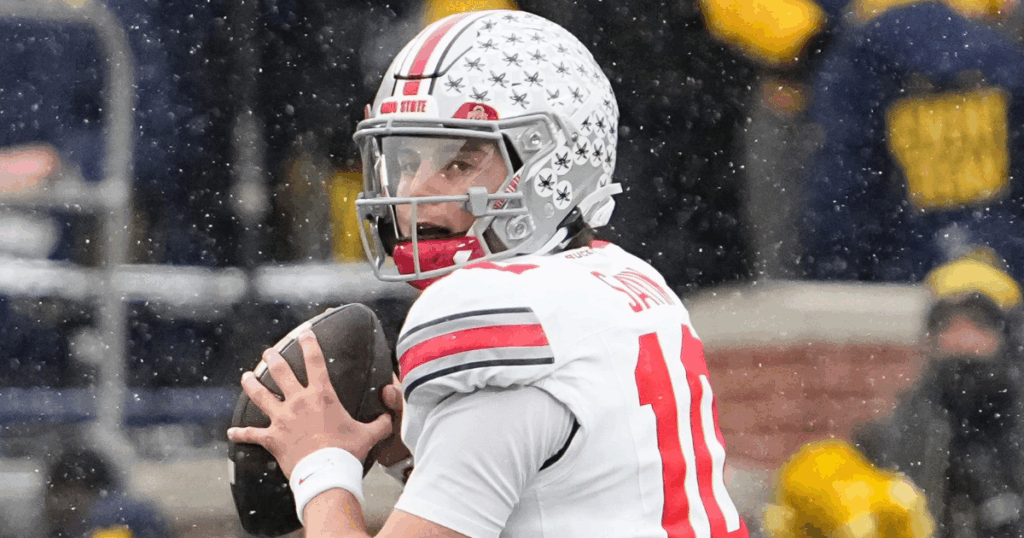
It was a disappointment in New York for Ohio State quarterback Julian Sayin. A Heisman finalist this season, he didn’t end up going home with the hardware. Instead, he’ll have to refocus on the College Football Playoff and winning on the field.
As a redshirt freshman, Sayin was a Heisman finalist. He’ll be back again in 2026 with added experience that is almost impossible to find in college football. So, there’s no reason why he can’t win.
Jeremiah Smith, WR, Ohio State Buckeyes
Coming into the 2025 season, Jeremiah Smith was commonly thought of as the best receiver in all of college football. He wouldn’t end up winning the Biletnikoff Award or being a Heisman finalist, though he was still thought of as the most talented receiver in the country.
Just a sophomore, Smith will be back next season and will, once again, be among the most thrilling players in the game. The only concern is whether or not he and Sayin will steal Heisman votes from one another.
Marcel Reed, QB, Texas A&M Aggies
Marcel Reed has been a revelation at quarterback for Texas A&M. The Aggies’ signal caller led Texas A&M to the College Football Playoff and has made them a legitimate threat to win the national championship. He’d use both his arm and legs to get there too.
As one of the most exciting players in the game who plays on a massive stage in the SEC, Reed is going to have the spotlight on him in 2026. If he plays up to his capability, he’ll be in the Heisman conversation once again. There’s no reason to think he can’t win it too.
Jayden Maiava, QB, USC Trojans
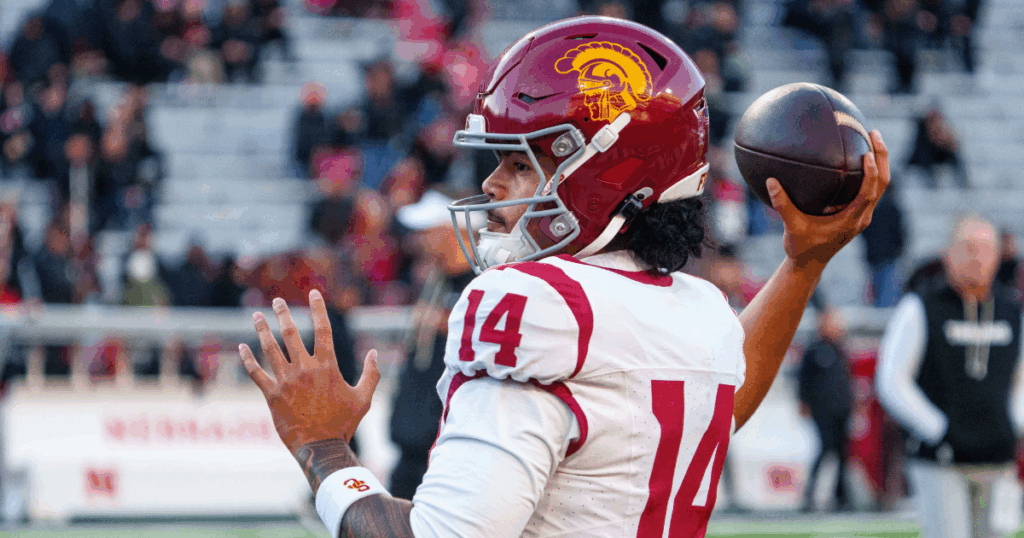
After taking over as the USC starter late in 2024, Jayden Maiava would hit his stride in 2025. Now, he and head coach Lincoln Riley are looking for a way to build on that once again.
If there is one thing that Lincoln Riley has found success doing it’s developing quarterbacks and explosive offenses. That’s led to Heisman Trophy success, including at USC. So, it’s not unfair to have high expectations for next season.
Other names to know
Ty Simpson, QB Alabama Crimson Tide
Alabama quarterback Ty Simpson is eligible to turn his attention to the NFL Draft next season. If he chooses to return to college, though, Simpson is going to be viewed as one of the best quarterbacks in the entire sport. He could very well even be a Heisman contender.
Gunner Stockton, QB, Georgia Bulldogs
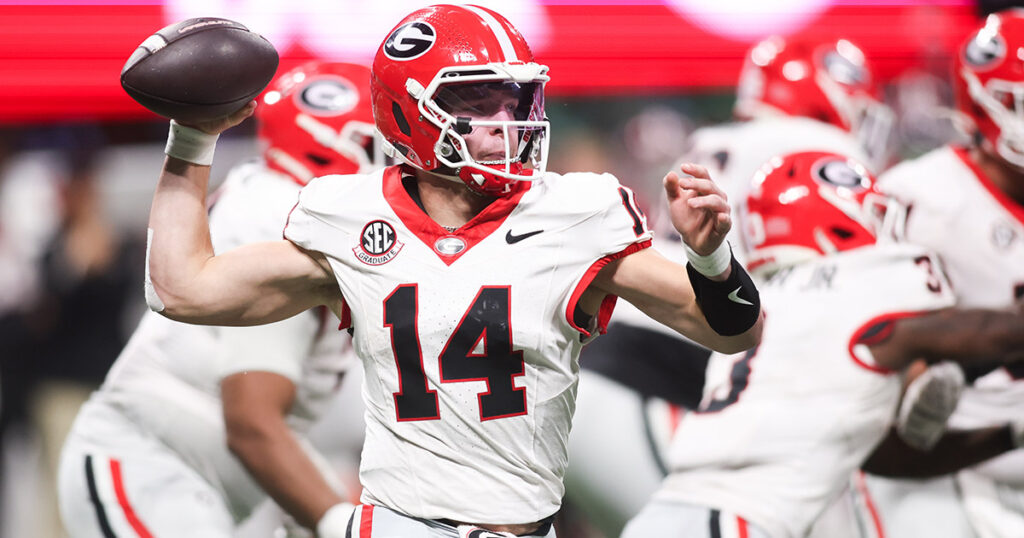
Georgia managed to win the SEC and a first round bye in the first season Gunner Stockton led the Bulldogs as their starting quarterback. He’ll likely be back next season with much higher expectations from the jump. So, he could feasibly end up in the Heisman race more so than he was in 2025.
Drew Mestemaker, QB, North Texas Mean Green
There is a chance that Drew Mestemaker could be a transfer this offseason, as his head coach is on his way to Oklahoma State. That comes after the pair combined for a phenomenal season at the Group of Five level. With more attention on him from the start, regardless of where he’s playing, the Heisman isn’t out of the question.
Sam Leavitt, QB, Arizona State Sun Devils
For the past two seasons, Sam Leavitt has been vital to making Arizona State one of the best teams in the Big 12. Now, there are rumblings that he could transfer. Regardless of where he ends up, Leavitt should be a Heisman contender.
Ahmad Hardy, RB, Missouri Tigers
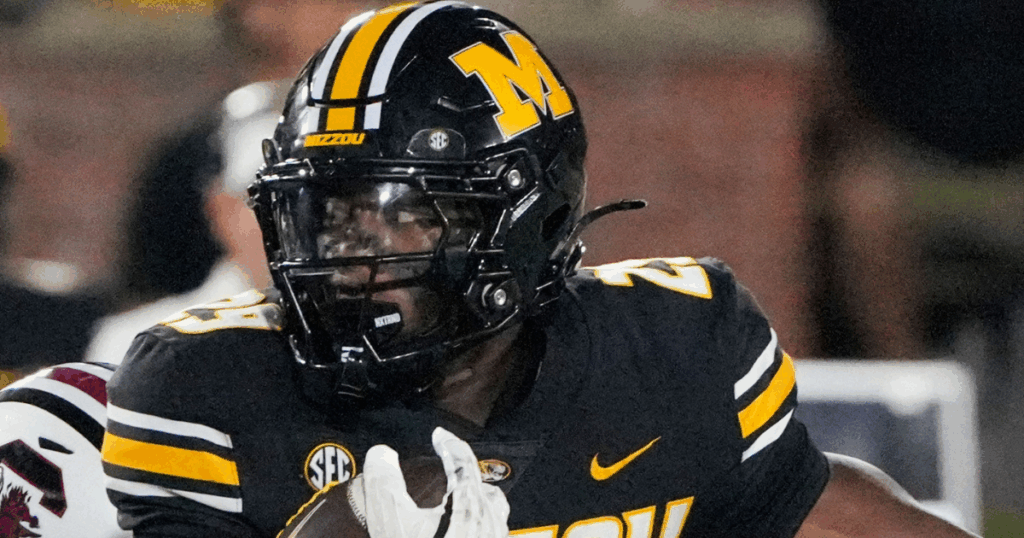
The Missouri Tigers managed to find one of the best running backs in the entire country this season, bringing in Ahmad Hardy. He’d rush for 1,560 yards and 16 touchdowns in 2025. If he can build on that in 2026, the Heisman may not be able to ignore his success.
Kewan Lacy, RB, Ole Miss Rebels
Another running back to keep an eye out on for the Heisman race next season is Kewan Lacy. The Ole Miss running back had 20 rushing touchdowns this year. That’s hard to ignore, but it’s also hard to replicate.
NIL
Dan Lanning Reveals Reasoning Behind His Loyalty to Oregon
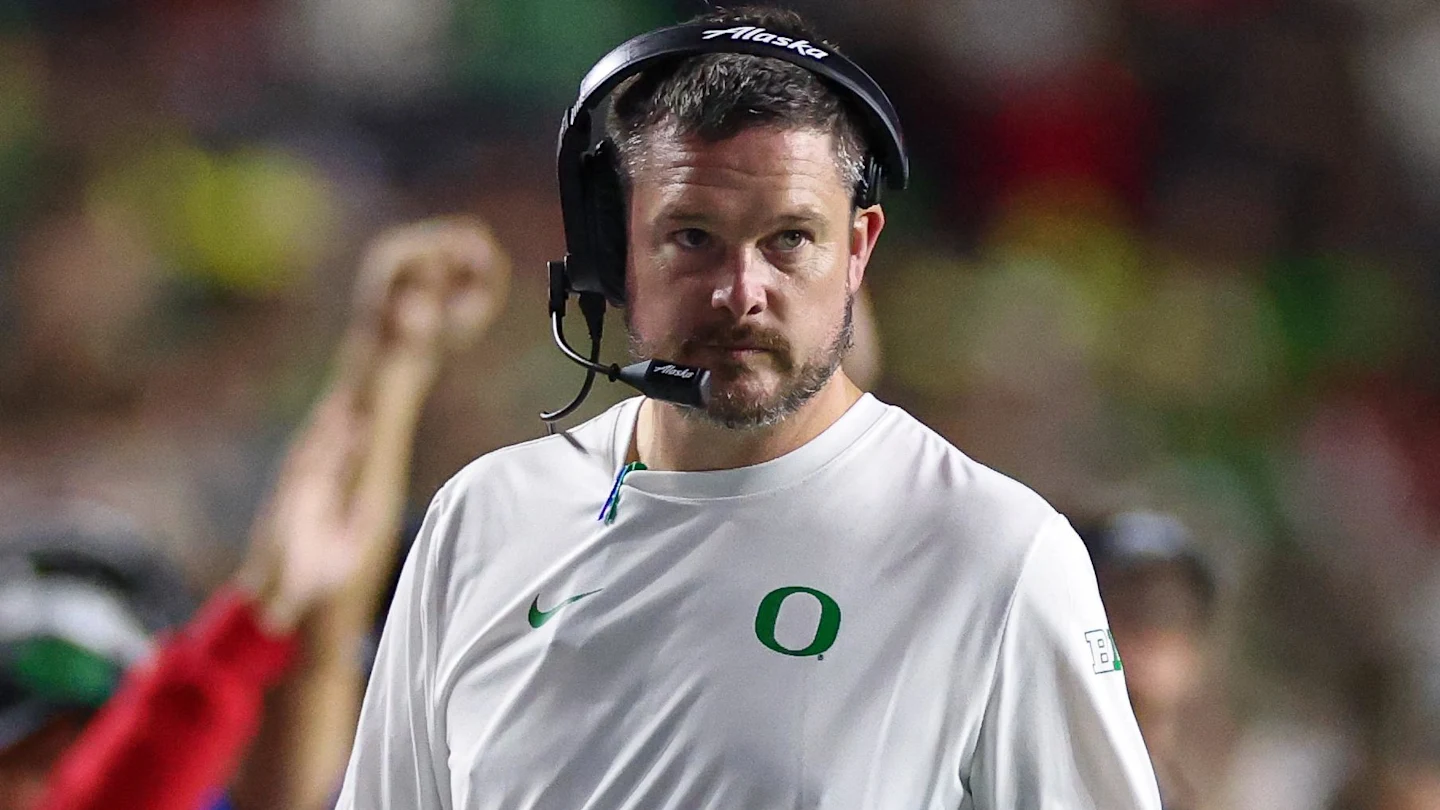
Dan Lanning has been asked many times since 2022 if he’d leave the Oregon Ducks for another head coaching job. While rumors have swirled pertaining to college football openings, a position in the NFL is something that could’ve lured Lanning away from Eugene in the past.
But the Ducks’ coach revealed on The Inner Circle Podcast that his former aspiration of coaching at the professional level is old news.
Dan Lanning Remains Committed to Oregon

Lanning spoke about how he started writing his career goals on his mirror when he was at Arizona State.
“I still put my goals on my mirror,” he said. “No. 1 best father on staff, best husband on staff, man of integrity, Christian, five recruits.”
Lanning, who was a graduate assistant for the Sun Devils, wanted to become a full-time employee. He checked that off the list by getting hired as the on campus recruiting coordinator.

“My next goal on there was head coach, 35. I thought that was really important to me,” Lanning said. “Well, I became the head coach at Oregon at 35. Next goal on there is NFL coach. That ain’t on my goal board no more. It’s off my board. It’ll never be up there again like that.”
Oregon hired Lanning as its football head coach on December 11, 2021, after he won as National Championship as the Georgia Bulldogs defensive coordinator. He’s quickly made a name for himself as one of the top young college football coaches.

Despite Lanning’s name getting thrown around as a candidate for vacancies like Alabama in 2024 or LSU in 2025, he’s remained vocal that Eugene is where he wants to be.
“I truly believe this will be my last job,” Lanning said. “The secret to that is I gotta win. Now do I coach as long as Nick Saban did? I don’t know about that.”
MORE: Weather Concerns Begin For Oregon’s Playoff Game vs. James Madison
MORE: Three Reasons Why Oregon Could Be The Most Dangerous Playoff Team
MORE: Oregon Ducks Projected to Make Program History In 2026 NFL Draft
SIGN UP FOR OUR NEWSLETTER HERE!
Dan Lanning Opens Up About Finishing His Career at Oregon
Staying with the Ducks seems to have additional meaning for Lanning beyond just his loyalty to the program. He said his family plays a major role in why he wouldn’t take an NFL job.
“It used to be a dream, but dreams can change,” Lanning said. “When we took this job, two of my kids had lived in eight states. And you realize, dang, like is that fair to them?”
“So, we took this job, I made a promise to my kids that you’re going to graduate from the same high school. You’re going to graduate from the same middle school,” he continued. “Like, those things are way more important to me than getting the opportunity to coach in the NFL.”

Lanning coached at six different schools from 2011 to 2021 before taking the job at Oregon. He’s coached the Ducks to a second consecutive College Football Playoff this season.
No Oregon head coach has spent more than five full seasons with the program since Mike Bellotti coached from 1995 to 2008. Lanning can change that in 2026.
-

 Rec Sports3 weeks ago
Rec Sports3 weeks agoFargo girl, 13, dies after collapsing during school basketball game – Grand Forks Herald
-

 Motorsports3 weeks ago
Motorsports3 weeks agoCPG Brands Like Allegra Are Betting on F1 for the First Time
-
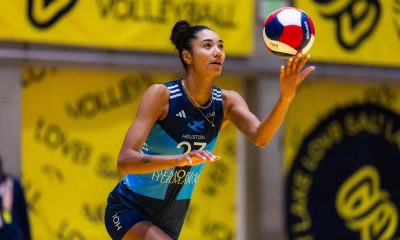
 Sports3 weeks ago
Sports3 weeks agoTwo Pro Volleyball Leagues Serve Up Plans for Minnesota Teams
-

 Sports3 weeks ago
Sports3 weeks agoUtah State Announces 2025-26 Indoor Track & Field Schedule
-
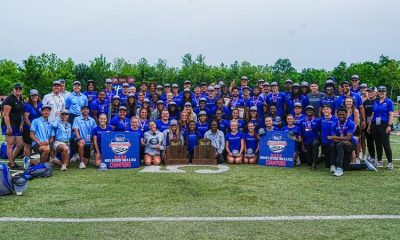
 Sports3 weeks ago
Sports3 weeks agoSycamores unveil 2026 track and field schedule
-

 Motorsports2 weeks ago
Motorsports2 weeks agoRedemption Means First Pro Stock World Championship for Dallas Glenn
-
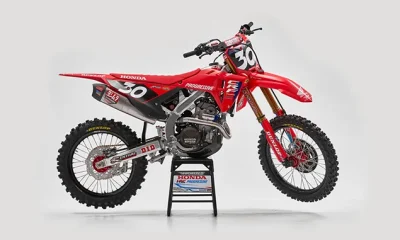
 Motorsports2 weeks ago
Motorsports2 weeks agoJo Shimoda Undergoes Back Surgery
-

 Sports3 weeks ago
Sports3 weeks agoTexas volleyball vs Kentucky game score: Live SEC tournament updates
-

 Rec Sports2 weeks ago
Rec Sports2 weeks agoRobert “Bobby” Lewis Hardin, 56
-

 Rec Sports2 weeks ago
Rec Sports2 weeks agoHow this startup (and a KC sports icon) turned young players into card-carrying legends overnight


























